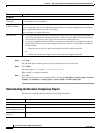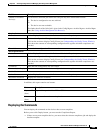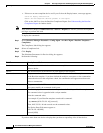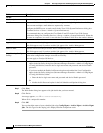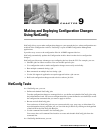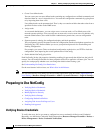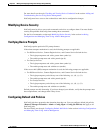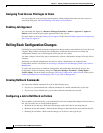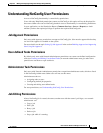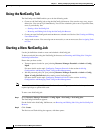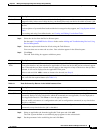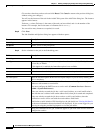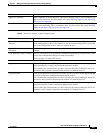
9-2
User Guide for Resource Manager Essentials 4.1
OL-11714-01
Chapter 9 Making and Deploying Configuration Changes Using NetConfig
Preparing to Use NetConfig
• Create User-defined tasks:
You can create your own user-defined tasks containing any configuration or rollback commands, and
download them to a set of selected devices. You enter the configuration commands by typing them
or by importing them from a file.
User-defined tasks can be parameterized. That is, they can contain variables that take values from a
specified file that resides on the RME server.
• Assign tasks:
As a network administrator, you can assign access to execute tasks, to CiscoWorks users with
network operator privilege. You can assign one or more task, to one or more users. By default, only
network administrators (users with Network Administrator permissions) can use configuration
tasks.
• Separate protocol ordering for configuration deploy and fetch operations
You can separately specify the protocol order for configuration download and update operations, for
NetConfig jobs. This feature enables you to use your preferred protocols for downloading and
fetching configuration.
For example, you can use Telnet to download configuration to the device, and TFTP to fetch the
configuration, thus improving the overall performance of NetConfig.
• Set the default NetConfig job policies
Each NetConfig job has job properties (including enabling job password) that define how the job will
execute. You can configure defaults for these properties that will be applied to all future jobs. You can
specify for each property whether users can change the default when creating a job.
See Understanding NetConfig User Permissions.
For the new features in this release, see What's New in this Release.
Note You can select the log level settings for the NetConfig application using the feature Application Log
Level Settings (Resource Manager Essentials > Admin > System Preferences > Loglevel Settings).
Preparing to Use NetConfig
• Verifying Device Credentials.
• Verifying Device Credentials
• Modifying Device Security
• Verifying Device Prompts
• Configuring Default Job Policies
• Assigning Task Access Privileges to Users
• Enabling Job Approval
Verifying Device Credentials
To verify that every device you want to configure has correct credentials in Device and Credential
Repository, use the Device Credential Verification option (Resource Manager Essentials > Devices >
Device Management > Device Credential Verification).



